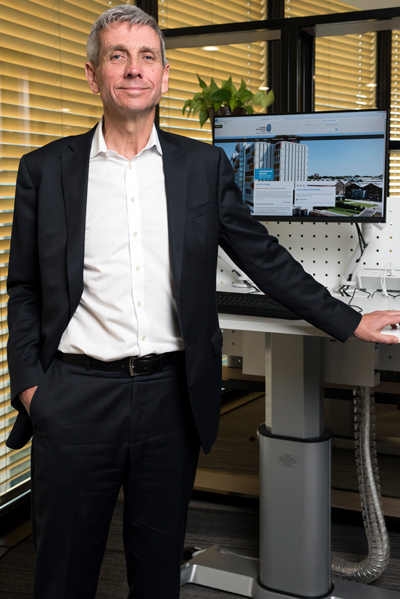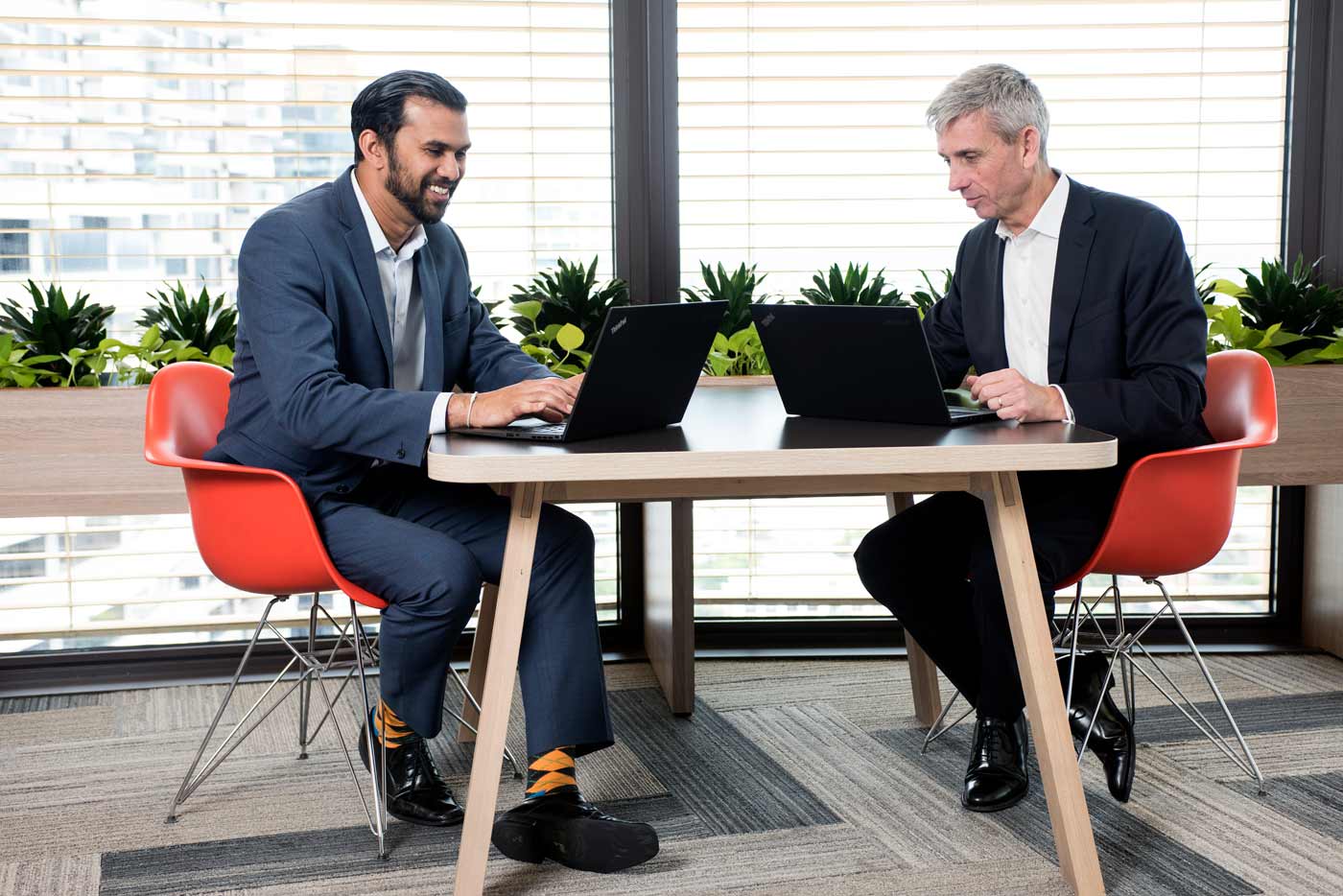Mirvac: changing the way work is designed
Technology has fundamentally changed the way people work – and now it is changing the way work is designed. Rather than being defined as a place, work is becoming an action, with technology its primary enabler.
Property group Mirvac designs to this vision of the technologically-integrated workday. But if it is going to design flexible, innovative and connected workspaces, it desperately needed to overhaul its own to meet that ambition.
 Mirvac Group GM, Business Transformation and Technology, David Smith says digital disruption hit the property and construction industry late compared to other sectors, but has emerged to have a huge impact on design.
Mirvac Group GM, Business Transformation and Technology, David Smith says digital disruption hit the property and construction industry late compared to other sectors, but has emerged to have a huge impact on design.
“It fundamentally changes and enhances the way that our customers interact with us, the way we build things and it has enormous implications around sustainability,” David says.
“We see technology as being core to our product, which are the buildings and places that we create and operate, and there is lots of fast moving change in the space. These days, technology is the biggest enabler of work productivity.”
It’s a priority for Mirvac both as a designer of workspaces and a workspace itself. Given it is a business that creates contemporary work spaces, it was a business imperative to transform the way Mirvac worked internally. The result of this process was moving Mirvac headquarters to 200 George Street Sydney – a new breed of office building that is part workspace, part “working lab”.
Key to the challenge of building 200 George Street was technology, given Mirvac had been using separate systems which didn’t speak to each other. Furthermore, Mirvac employs nearly 1500 people, and only 600 call the office building their base – so it was crucial that the business is able to offer flexible working arrangements to mobilise their network of staff. Unfortunately the legacy systems made it harder for staff to be able to work on-the-go.
“Where are those other people? Some of those people are working on construction sites, retail sites and running the various office and industrial assets we have across Australia,” David says.
“People can be in all of those different places and can also work from home. Technology needs to allow people to collaborate regardless of where they are across the country.”
Building a process that had people in mind had to begin, and end, with their input. Mirvac started its two year transformation with employee consultation in order to bring staff along on the journey. Next, the business began prototyping, as well as piloting technology and different set-ups.
One of the biggest changes was the creation of an agile office. It meant a shift from workspace relics like desk phones and printers to big initiatives such as paper-free, with new technology the conduit to make it possible. Every staff member is now given a mobile device, a headset and a mobile phone when they start as their tools for business.
But while the hardware is new, what really made the transformation sing was the software surrounding it. As part of the change, Mirvac needed a robust Cloud system to ensure staff were able to access their workspace remotely.
Mirvac Group IT Operations Manager Ramesh Narayanan says Office 365 was implemented to ensure staff mobility by introducing tools like Skype for Business, OneNote, SharePoint and Yammer to create an online workspace. The technology has also been integrated into meeting rooms to ensure the system is simplified across the board.
When it came to the unveiling of 200 George Street, every staff member spent three weeks trialing the desks and IT equipment to ensure they were familiar with it from the very beginning.
“We got everyone into a session and showed them all about their technology, what they were doing, how they should be using their laptops or headsets,” Ramesh says.
“Then while training them, we were in the background taking away their old computers and setting them up. We put people in a situation where they came out of the training and the last question they were asked was ‘Are you ready to go into the new world?’ and then off they went.”
“People walked in on a Monday as if they’d been here for months and months, so that for us was a huge measure of success.”

Since the launch, the tools have become an integral part of the business and the building itself. The company launched a building app allowing people who work and visit it to receive information on the building, how to navigate around it and to get in touch with other people.
While it is a success so far, Ramesh calls the project a moving target that will continue to grow and evolve with the technology and the needs of staff. Mirvac is currently looking at how it can move more systems on the Cloud to reduce its physical and storage presence. Further, it is looking at moving on to Windows 10 as a way to better unlock tablet devices.
Another opportunity for the business stems from the evolution of the Internet of Things. Mirvac recently invested in a new Microsoft Surface Hub, designed to enable teamwork in offices environments, with a plan to invest further if it works in the space. The business is also looking further afield to see how technology can enhance the way people work.
“We want to push the boundaries in smart connected buildings. How can we make smart meeting rooms for instance?” Ramesh says. “Do we use Cortana in media rooms to help with carrying out a meeting or taking minutes? Facial recognition within buildings – if you walk towards a door can we just walk straight in? There is a whole bunch of things that we’re continuing to investigate.”
Beyond the inner workings of Mirvac, the transformation has also had an impact on potential customers. So far, countless existing and potential clients have walked through 200 George Street, viewing it as a showcase of how technology and smart workspaces can be built together. It has also had an impact on retention, highlighting to the industry that Mirvac is unparalleled in its adoption of smart workplaces.
“We’ve recognised the big role that technology has to play in contemporary workspaces and we now have a showcase that, at its heart, demonstrates what is possible,” Ramesh says.
“We’ve got ourselves in a leadership position versus our industry peers in Australia and to stay there, we’ve got to continue to innovate.”
“Because it’s not about putting one brick on top of the other anymore. It’s about building a platform for people to use.”














